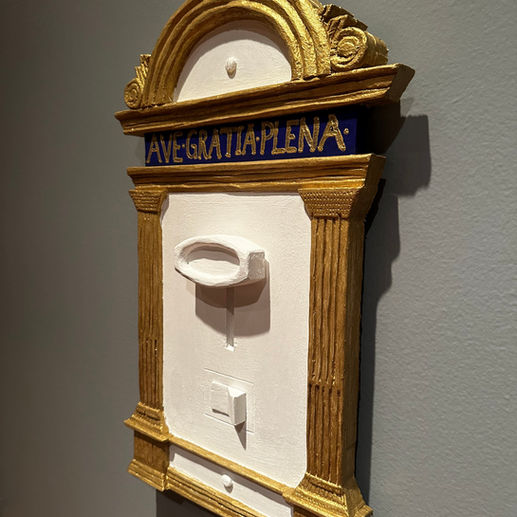
The Madonna of the Future
Acrylic on wood
22.5 x 13.75 x 2”
2024
In Henry James’s short story, “The Madonna of
the Future,” the artist Theobald seeks to paint a
Madonna in the style of Raphael. At the end of
the story, we discover that Theobald’s magnum
opus is just a blank canvas. As Kazmir Malevich
said, “A square is not a picture, just as a
switch…is not electricity. Anyone who…saw the
icon as…a picture was mistaken. For he mistook
the switch…for a picture of electricity.”
After the invention of the camera and the emergence of Impressionism, Henry James wrote his short story, “The Madonna of the Future,” exploring the future of art. This future Madonna does not adhere to aesthetic conventions as those Madonnas in history have. Instead, this contemporary Madonna is imbued with meaning and not merely mimetic. It’s imaginative, not just an image. Historically, we’ve already seen the shift when the icon shifted from religious object to Art. The icon turned from a religious object of action into a museum object of contemplation. The icon was a religious object – not Art. It was a portal into heaven and a place for the saints to gaze at the viewer. But an intellectual shift comes about in the proto-Renaissance, where di Buoninsegna and others begin to place the holy figures in situ. They are painted in earthly places; they no longer look out of the frame. The icon thus transforms from an object that gazes at the viewer to one where the viewer contemplates the image itself. Now, such pictures don’t even merit contemplation but act as symbols and lose their significance when acting as such. Considering Malevich's quote above, how do we gain that electricity back in our interaction with art? Perhaps finding God in all things is not about what we depict but how we interact with what is depicted.



